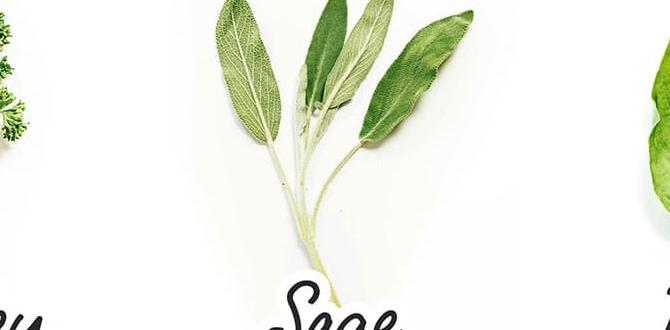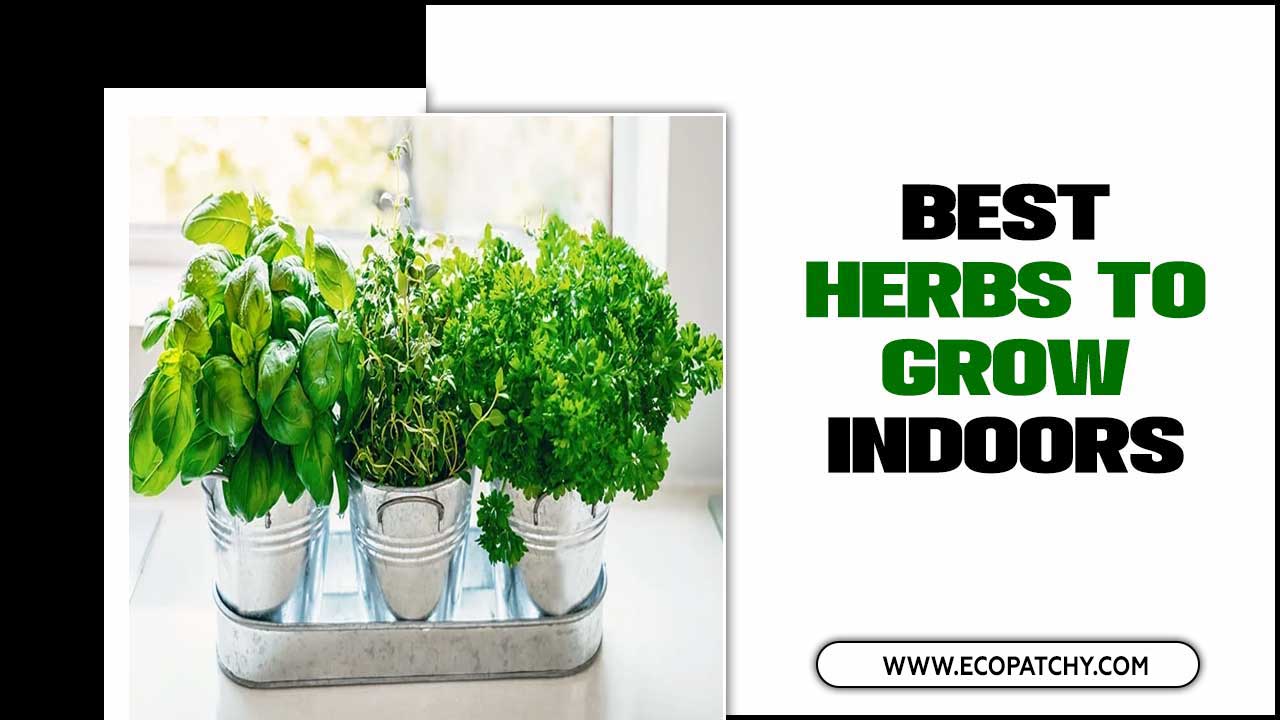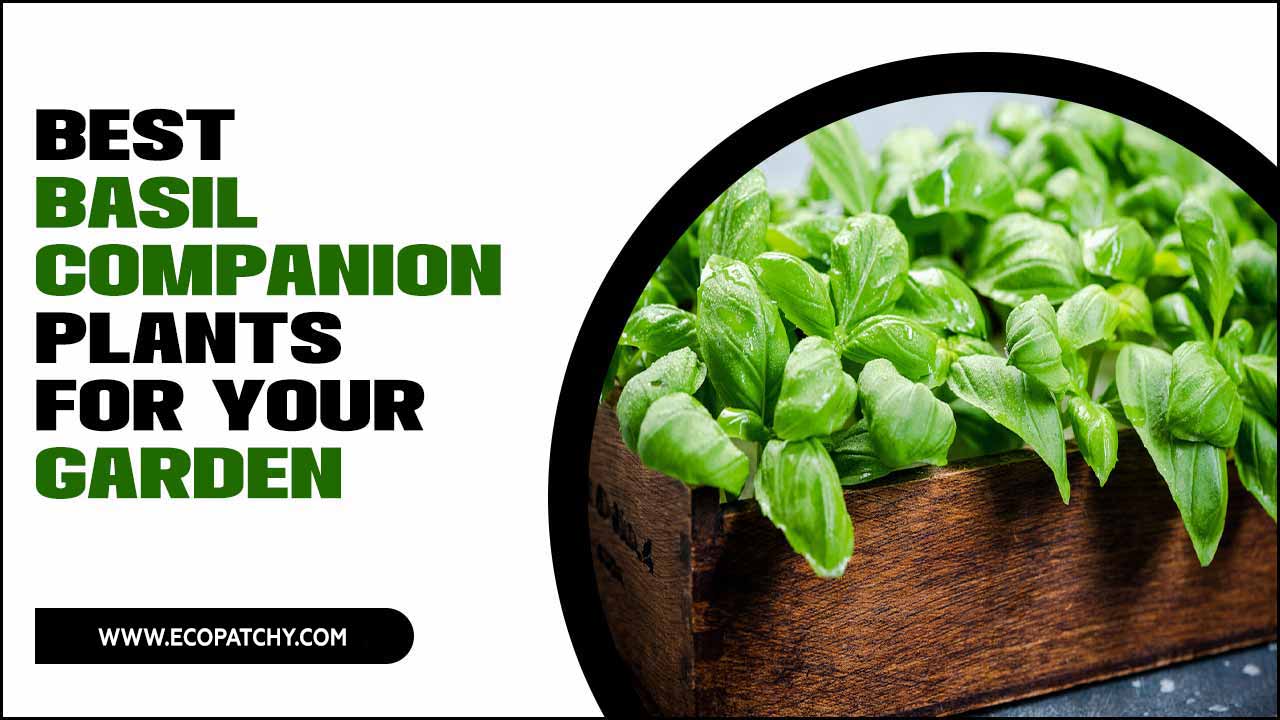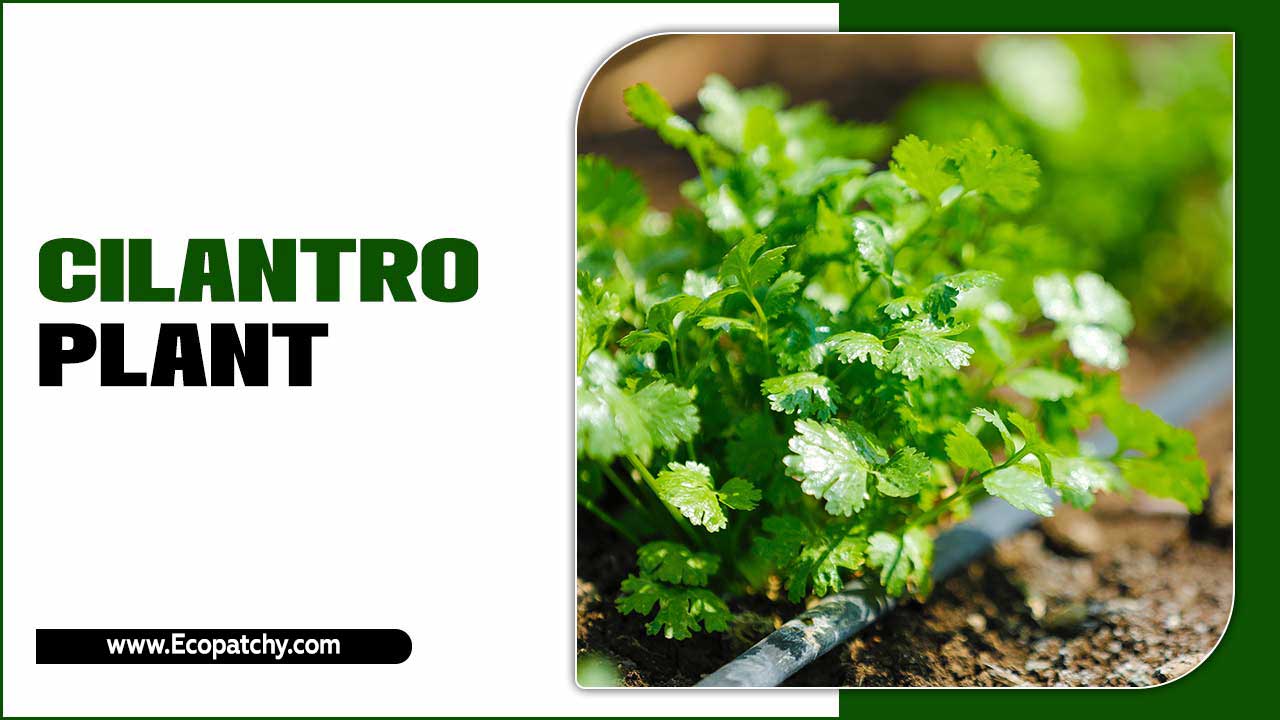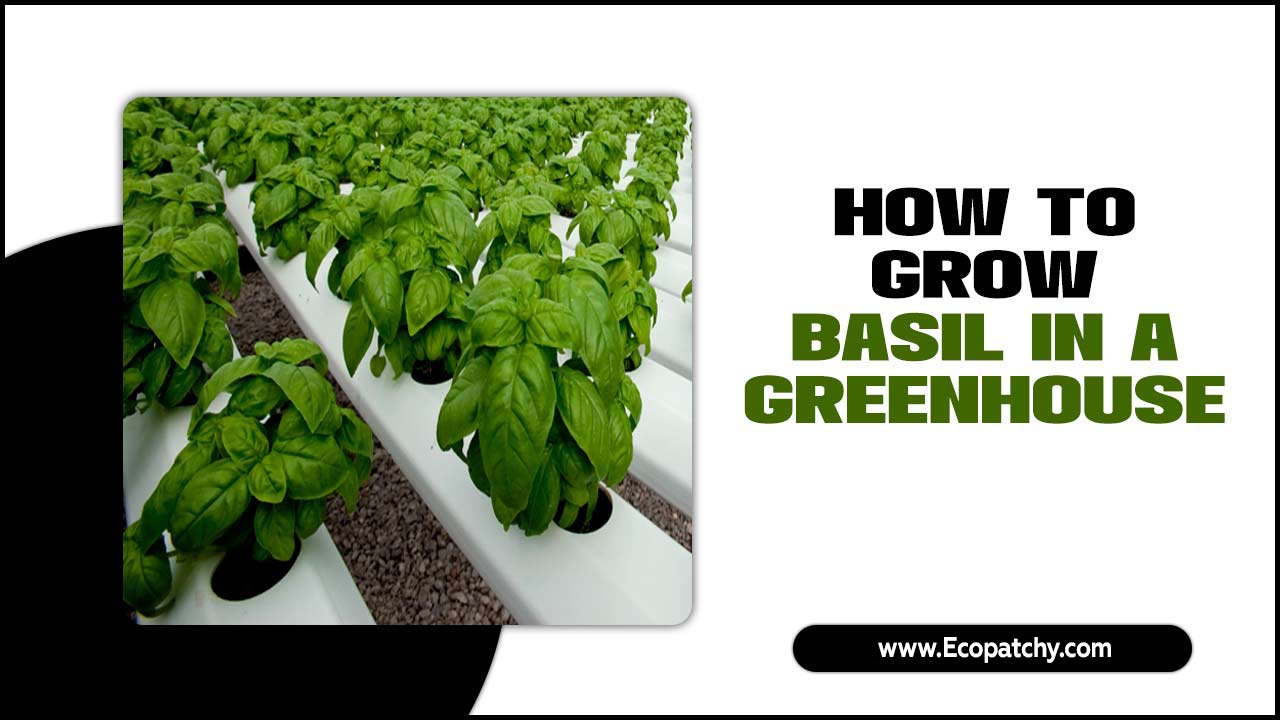Basil, also known as the “king of herbs,” is a versatile and aromatic plant that is popularly used in various cuisines around the world. Not only does it add a burst of flavor to dishes, but it also has numerous health benefits.
Growing your own basil plants at home not only guarantees a fresh supply of this herb but also allows you to control the quality and ensure it is free from harmful pesticides. However, for many, the thought of growing plants at home can seem daunting and complicated. With the right knowledge and techniques, growing basil plants can be a rewarding and enjoyable experience.
We will guide you through the entire process of growing basil plants at home, from selecting the right seeds to harvesting and storing the herb. Whether you have a spacious garden or a small apartment balcony, our step-by-step instructions will help you successfully grow this herb and add a touch of freshness to your dishes.
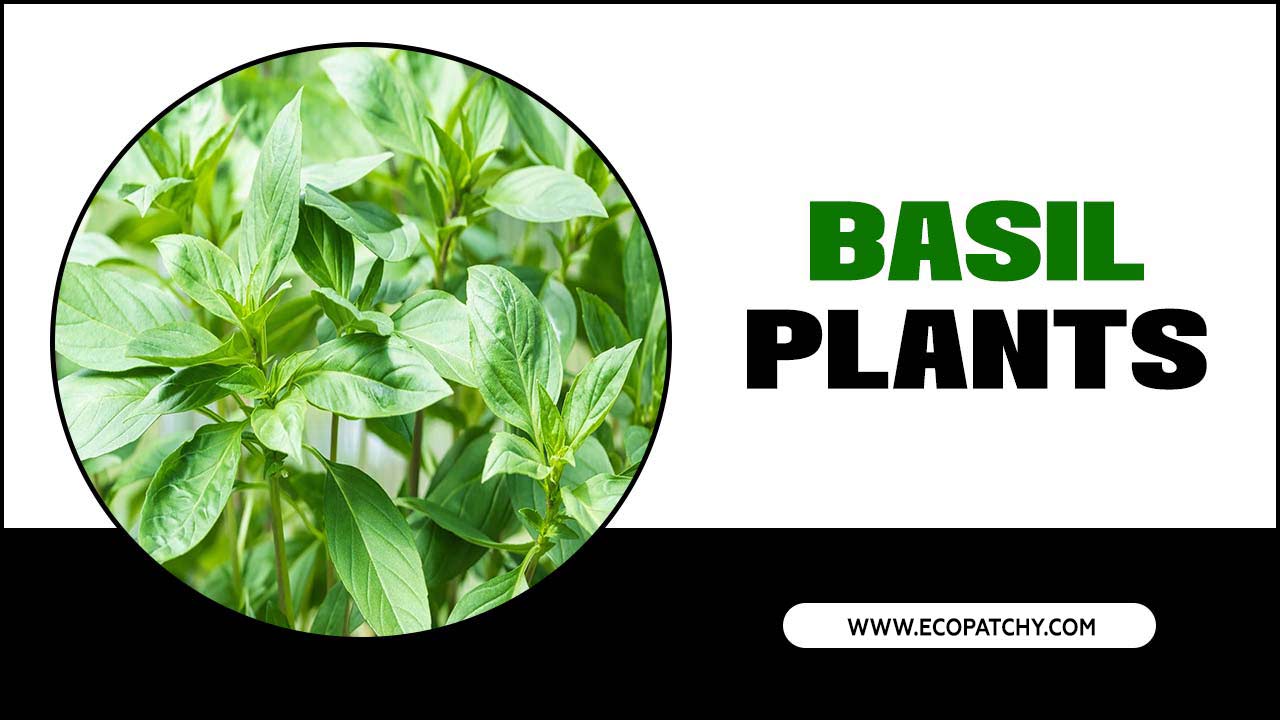
Popular Types Of Basil
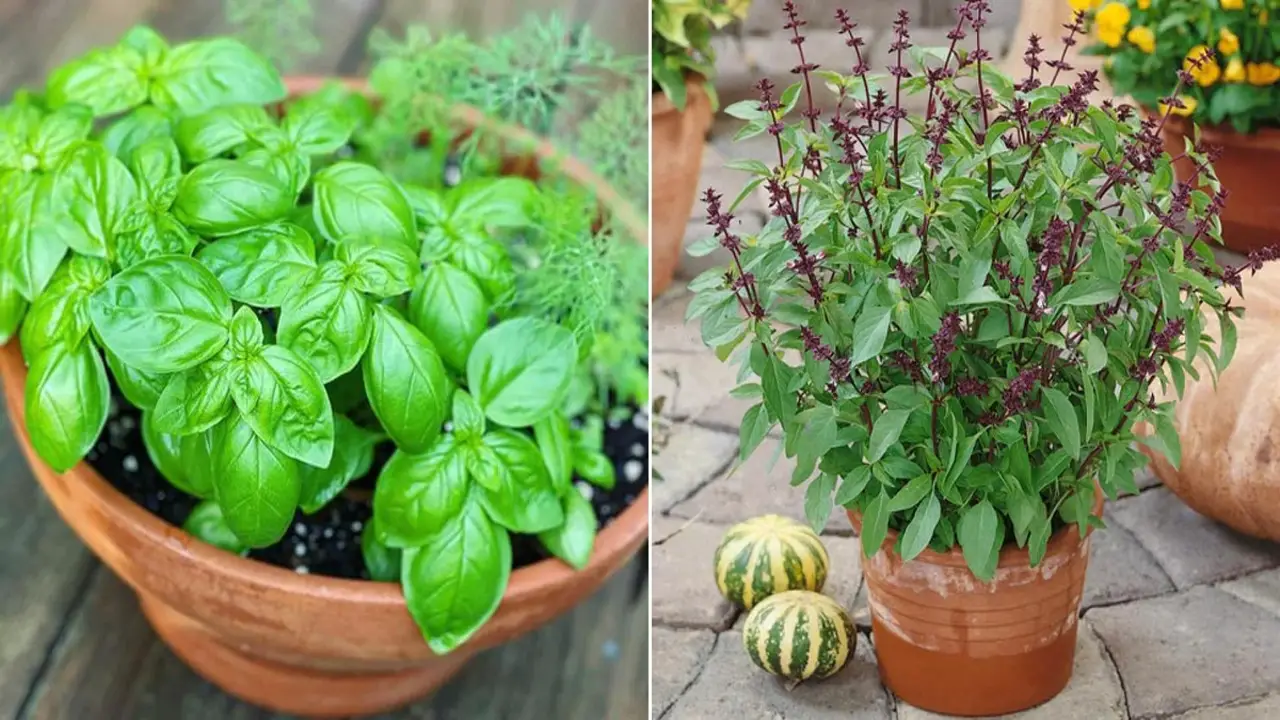
There are several popular types of basil that you can grow in your garden or use in your cooking. These are just a few examples of the many different types of basil available. Each variety offers its own distinct characteristics, so feel free to experiment and find your favorite! Some of the most common types include:
- Sweet Basil: This is the classic basil variety that is commonly used in Italian cuisine. It has a sweet and slightly peppery flavor.
- Genovese Basil: Similar to sweet basil, Genovese basil is often used in Italian dishes, particularly in pesto sauce. It has a strong aroma and a slightly spicy taste.
- Thai Basil: As the name suggests, Thai basil is commonly used in Thai cuisine. It has a licorice-like flavor and pairs well with spicy dishes.
- Lemon Basil: This variety has a citrusy scent and flavor, making it a great addition to salads, seafood dishes, and cocktails.
- Purple Basil: Purple basil has an attractive deep purple color and adds a unique flavor to dishes. It can be used as a garnish or infused into oils and vinegar for added color and taste.
How To Grow Basil Plants At Home? – 8 Steps
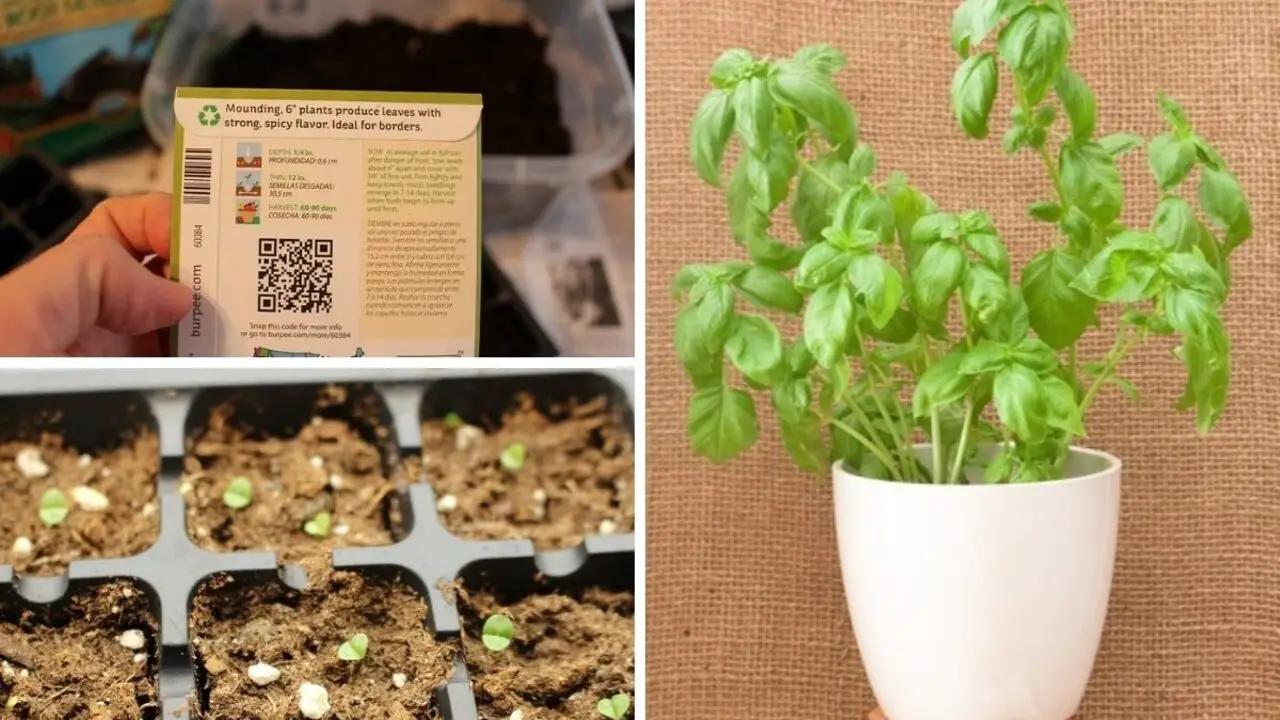
Growing basil plants at home is a great way to have fresh herbs on hand for cooking and adding flavor to your dishes. By following these simple steps, you can enjoy a bountiful harvest of fresh basil leaves right at home, perfect for adding flavor to your favorite dishes or making homemade pesto sauce. Here are 8 steps to help you successfully grow basil plants at home:
1.Choose A Sunny Spot
To ensure your basil plants thrive, it’s crucial to find the perfect sunny spot. Providing ample sunlight is essential for optimal growth. Look for a location that receives at least 6 hours of direct sunlight daily. Creating a warm and sunny environment will help your basil plants flourish. To maximize basil plant growth, select a spot with full sun exposure. By choosing a sunny spot, you’ll set the stage for healthy and vibrant basil plants.
2.Prepare The Soil
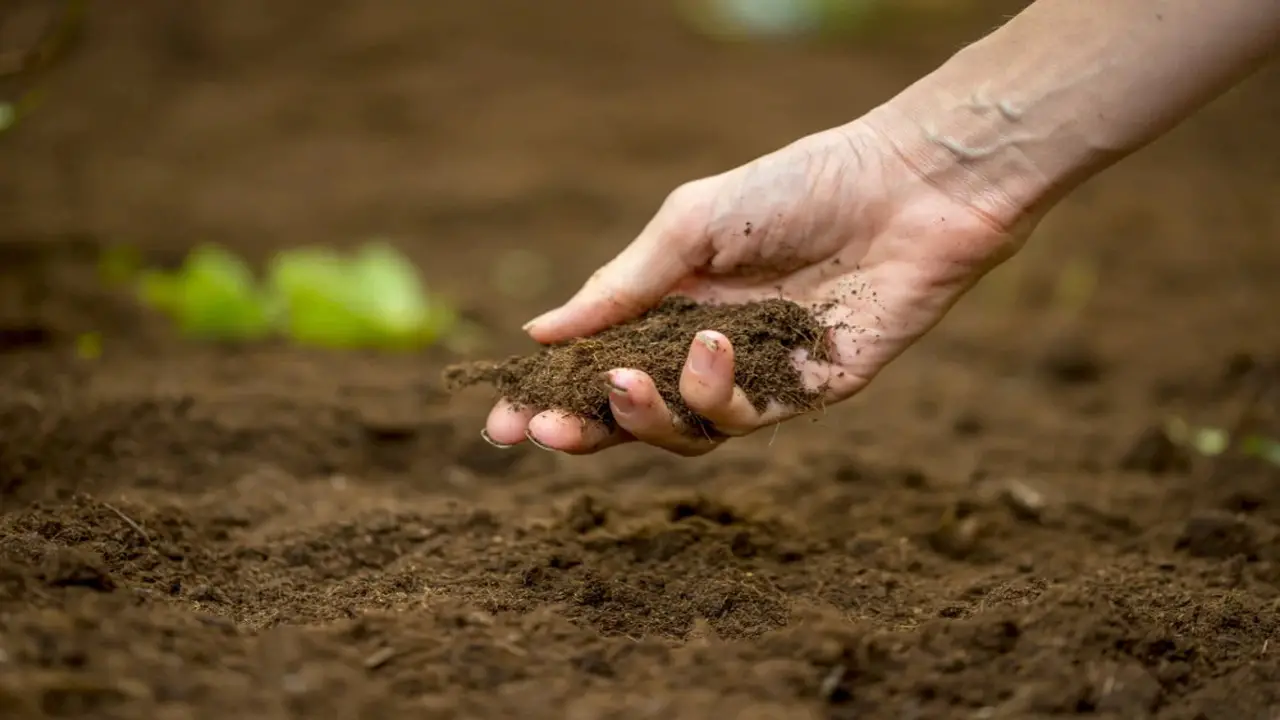
To ensure the robust growth of your basil plants, it’s essential to prepare nutrient-rich soil that provides ideal conditions for their development. Incorporate organic matter into the soil to promote proper drainage and fertility.
This will create a fertile base for your basil plants to thrive in. Before planting basil, consider enriching the soil with compost or aged manure. By taking these steps, you’ll be laying the foundation for healthy and vibrant basil plants in your garden.
3.Select The Right Variety
When selecting the right basil variety for your needs, explore the different options available to find the perfect fit. There is a wide range of basil varieties to choose from, each with its own unique taste and flavor profile.
Consider your culinary creations and select a basil variety that complements them well. Adding unique and flavorful basil varieties to your garden can bring variety and excitement to your meals. Keep your gardening goals in mind and find the basil variety that meets them best.
4.Plant The Seeds Or Seedlings
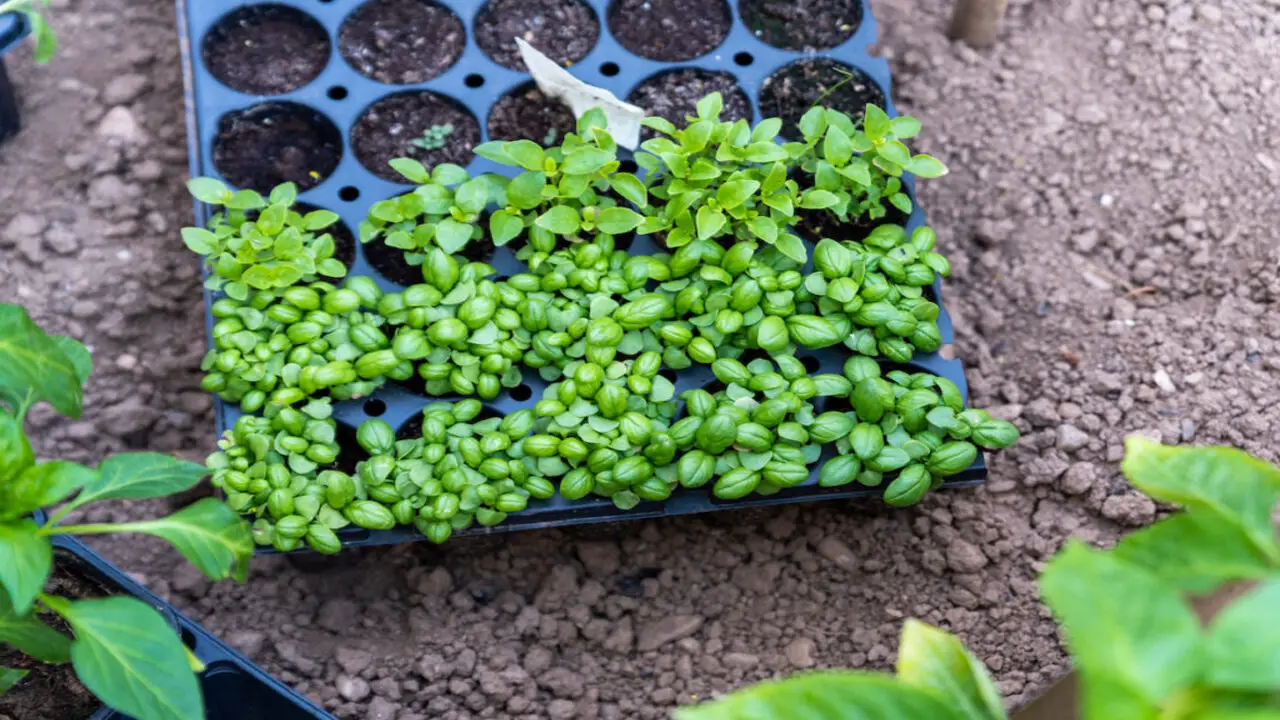
To get started with your basil plants, you can either begin with seeds or choose to purchase healthy seedlings. Whichever option you go for, there are a few steps you need to follow to ensure successful planting. You can sow the basil seeds directly into the garden soil or start them indoors and later transplant the young seedlings.
Proper spacing is important when planting basil seeds or seedlings to allow for adequate growth and development. By planting your basil plants correctly, you give them a strong start and set them up for healthy leafy growth.
5.Water Regularly
To ensure optimal growth, it is essential to water your basil plants properly. Keep them hydrated by watering them regularly, and finding the right balance of moisture for their needs.
Avoid both overwatering and underwatering, as these can be detrimental to their health. It is recommended to develop a watering routine to maintain a healthy environment for your basil plants. By following these practices, you can ensure that your basil plants thrive and flourish.
6.Fertilize As Needed
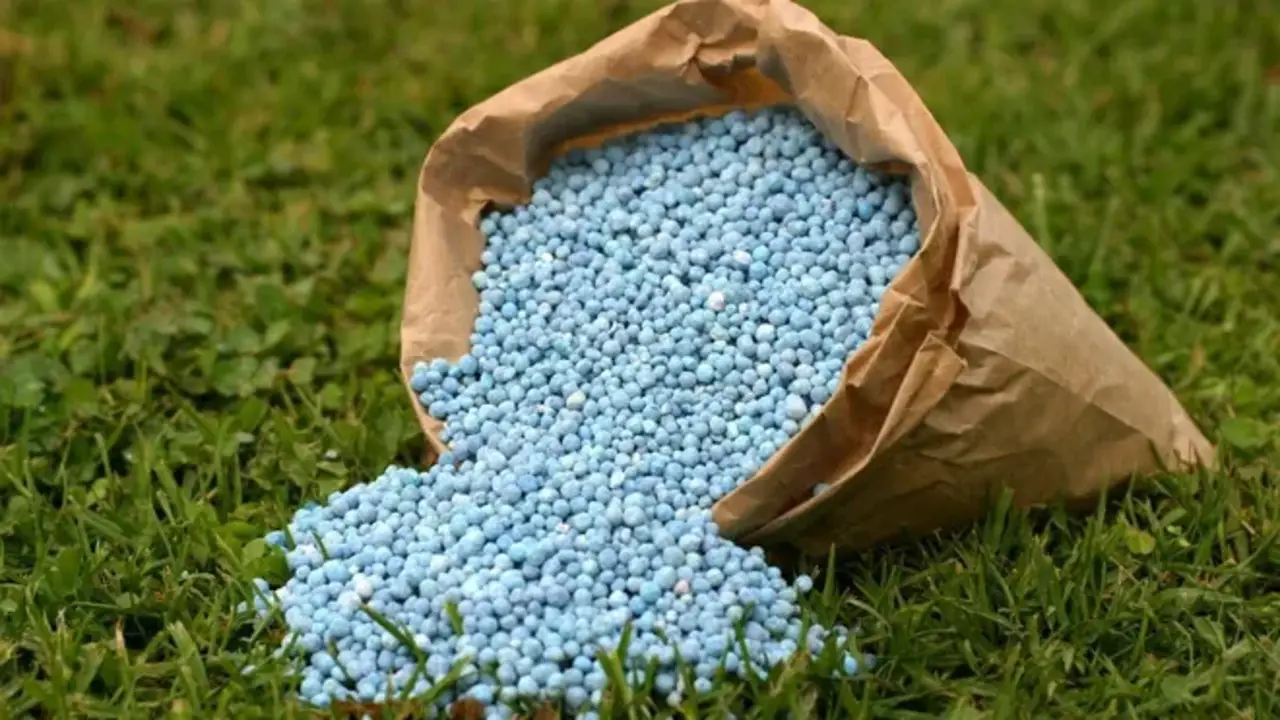
To ensure healthy and vibrant basil plants, it is important to provide them with the necessary nutrients through fertilization. Fertilizing your basil plants will enhance their growth and flavor. You can feed them with organic or slow-release fertilizer as needed.
This will help them receive the essential nutrients they require to thrive. Following a fertilization schedule will ensure that your basil plants remain healthy and vibrant throughout their growing season. Remember to fertilize your basil plants regularly to keep them in optimal condition.
7.Thin The Seedlings
To promote healthier growth, it is important to thin out overcrowded basil seedlings. By removing excess seedlings, you can improve air circulation and prevent overcrowding. This gives the remaining seedlings more space to grow and develop robust foliage.
Each basil plant should have enough room to thrive and reach its full potential. Thinning your basil seedlings is a crucial step for better overall plant health. So, take the time to thin them out and ensure their proper growth and development.
8.Harvest And Enjoy
Learn the ideal time and techniques for harvesting your basil leaves. Harvest regularly to promote continuous growth and ensure a bountiful supply. Freshly harvested basil from your garden adds a burst of flavor to your meals.
Experiment with different varieties like Thai basil, sweet basil, or lemon basil to enhance your dishes. Store dried basil in an airtight container for future use. Enjoy the aromatic leaves and the delicious taste of this member of the mint family.
Growing And Caring For Basil Plants
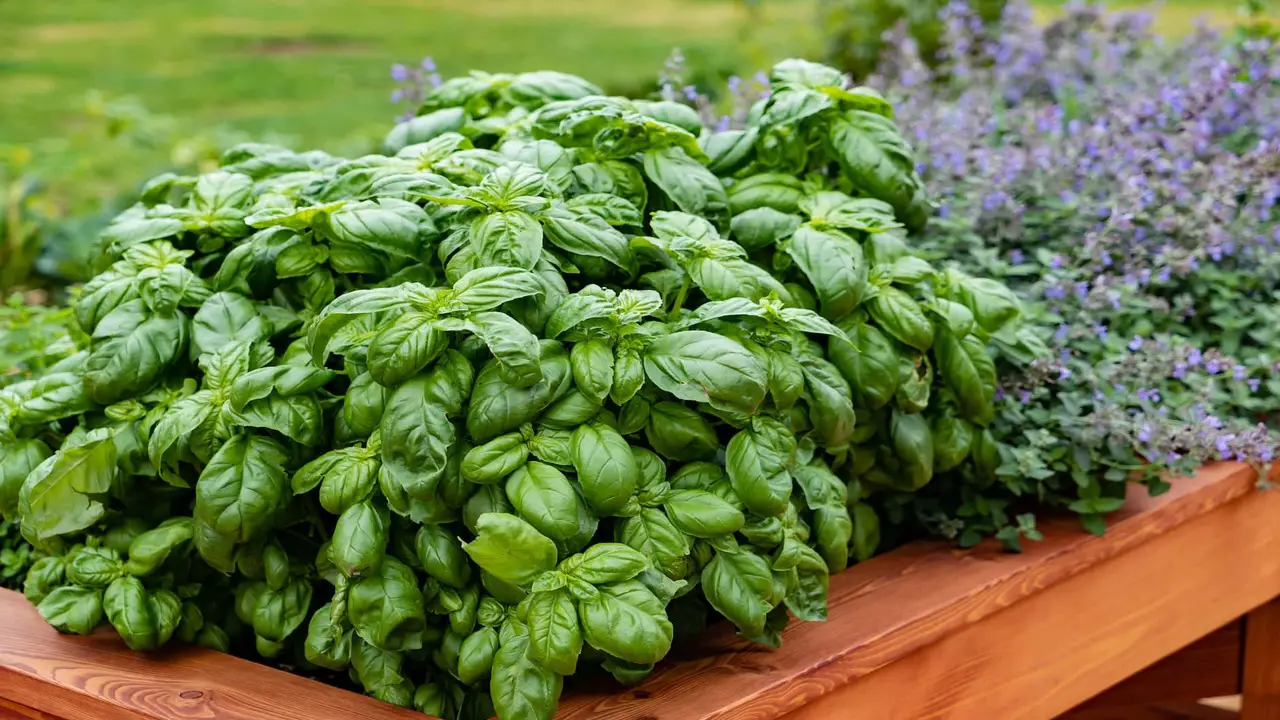
Growing and caring for basil plants is relatively easy, making them a popular choice for herb gardens. By following these tips, you can enjoy a bountiful harvest of fresh basil leaves throughout the growing season. Here are some tips to help you successfully grow and care for your basil plants:
- Planting: Choose a sunny location with well-drained soil. Basil plants prefer warm temperatures, so wait until after the last frost to plant them.
- Watering: Keep the soil evenly moist, but be careful not to overwater. Basil plants do not like sitting in waterlogged soil.
- Fertilizing: Feed your basil plants with a balanced fertilizer every four to six weeks during the growing season. This will help promote healthy growth and enhance flavor.
- Pruning: Regularly pinch off the tips of the basil plant to encourage bushier growth. Harvesting leaves regularly will also help keep the plant compact and prevent it from flowering too soon.
- Pests And Diseases: Basil plants can be susceptible to pests like aphids and diseases like downy mildew. Monitor your plants regularly and take appropriate measures if you notice any issues.
Common Problems To Watch For
Growing and caring for basil plants can be a rewarding experience, but it’s important to be aware of common problems that may arise. Here are some issues to watch out for:
- Pests: Basil plants are susceptible to pests such as aphids, whiteflies, and spider mites. Regularly inspect your plants for any signs of infestation, such as yellowing leaves or sticky residue on the leaves. If you spot any pests, try using organic pest control methods or insecticidal soap to get rid of them.
- Disease: Basil plants can be affected by fungal diseases like downy mildew and fusarium wilt. To prevent these diseases, make sure your plants have good air circulation and avoid overhead watering. If you notice any signs of disease, such as wilting or discolored leaves, remove and destroy the affected plant parts to prevent further spread.
- Nutrient Deficiencies: Basil plants need sufficient nutrients to grow healthy and flavorful leaves. Common nutrient deficiencies in basil include nitrogen, potassium, and magnesium. To prevent deficiencies, use a balanced fertilizer specifically formulated for herbs and follow the recommended application rates.
- Overwatering: Basil plants prefer moist but well-draining soil. Overwatering can lead to root rot and other problems. Make sure the soil is slightly damp but not waterlogged. Allow the top inch of soil to dry out before watering again.
By being proactive and addressing these common problems, you can ensure that your basil plants thrive and provide you with an abundant harvest of aromatic leaves.
Repotting And Harvesting Tips
Repotting and harvesting are important aspects of caring for basil plants. When it comes to repotting, it is recommended to do so when the plant starts to outgrow its current container.
Choose a pot that is slightly larger than the current one and ensure it has drainage holes to prevent waterlogging. Gently remove the plant from its current pot, being careful not to damage the roots, and place it in the new pot with fresh potting soil. Water thoroughly after repotting.
When it comes to harvesting, it’s best to do so before the plant flowers. This is when the leaves have the most flavor. To harvest, simply trim off individual leaves or cut back entire stems as needed. Use a sharp pair of scissors or pruning shears to avoid damaging the plant. Regular harvesting will help encourage bushier growth and keep your basil plants thriving throughout the season.
Conclusion
Growing basil plants at home can be a rewarding and enjoyable experience. By following these simple steps, you can have an abundant and fresh supply of basil right at your fingertips. Remember to choose a sunny spot, prepare the soil, select the right variety, and plant the seeds or seedlings. Water regularly, fertilize as needed, and thin the seedlings to ensure healthy growth.
Once your basil plants are ready for harvest, you can start enjoying their aromatic leaves in various culinary creations. Caring for your basil plants is essential to keep them thriving, so be sure to watch out for common problems and provide the necessary care. Whether you’re a seasoned gardener or a beginner, growing basil plants at home is a wonderful way to add flavor and freshness to your meals.
Frequently Asked Questions
1.Does Basil Like Full Sun Or Shade?
Ans: Basil plants prefer full sun, although they can tolerate some shade. When growing basil indoors, place it near a south-facing window for maximum sunlight. Outdoors, make sure it receives at least 6 hours of direct sunlight daily for optimal growth. Too much shade can result in leggy and weak plants.
2.How Do You Pick Basil So It Keeps Growing?
Ans: To ensure your basil plants continue to thrive, pluck the leaves from the top, not the bottom. Pinch off the stem just above a pair of leaves to encourage branching and new growth. Avoid removing more than a third of the plant at once to prevent stunting its growth. Regularly harvesting will stimulate new growth and maintain healthy basil plants.
3.Does Basil Come Back Every Year?
Ans: Basil is an annual herb, completing its lifecycle in one growing season. However, with proper care, it can come back in subsequent years. Regular pruning and using a frost blanket during winter can help encourage its return. Remember to harvest regularly for a healthy and productive plant.
4.How Do You Look After Basil Plants?
Ans: To care for basil plants, ensure they receive at least 6 hours of sunlight daily. Water regularly without overwatering to prevent root rot. Encourage bushier growth by pinching off the top leaves and prevent early flowering. Use a balanced fertilizer every 2-3 weeks for optimal growth.
5.How Much Sun Does Basil Need To Grow?
Ans: Basil plants thrive with at least 6 hours of sunlight daily. In hot climates, some shade during the hottest part of the day is beneficial. If natural sunlight is limited, basil can be grown indoors using grow lights. Adequate air circulation and well-drained, moist soil promote healthy growth.

